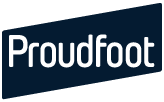Every organization – no matter its size, history, or industry – wants to get better at what it does. This thirst for optimization is even more essential in the context of recent events, with rising inflation and supply chain disruptions.
Too often, though, what’s holding it back is a lack of a unified plan to reduce cost and accelerate revenue. Many small initiatives need to come together to combat inflationary pressures, and that requires alignment from the C-suite down to the frontline employees.
As part of Proudfoot’s Business Transformation Lab, our expert team conducted a masterclass and panel to deliver key insights on how to protect your business from inflation. Here are the top takeaways that you need to consider to accelerate operational transformation by focusing on people and processes.
Get buy-in for optimization from the start
When a company starts looking at optimization, the first goal is to identify what work you want to do. What are your skill sets, objectives, and goals for this transformation project? From there, you can drill down into your existing processes and start looking for ways to simplify these processes.
Whether that takes a greenfield approach, or you simply decide to start optimizing what you already have, it needs to begin with that “identifying” step.
Getting stakeholder buy-in from the beginning is critical. Your people need to buy into the solution – and ideally be part of the creation of that solution -, or else company-wide adoption will never occur.
Moreover, if your proposed solutions don’t make their lives easier, people will revert to the legacy ways of doing things – which are likely time-consuming and costly.
Sadly, this is the reality for a lot of companies that embark on transformation projects – they design and roll-out solutions without full buy-in from the workforce and people directly impacted by that change.
Your number one goal at the start of the optimization process is to get people involved in redesigning these processes as soon as possible. When you do that, using the new solutions will be baked into your team’s mindset from the start.
Everyone must be on the same page
Aaron Streeton, Chief Delivery Officer at Proudfoot, uses a timely example to describe the power of having your whole team on the same page from the beginning.
“The New England Patriots have been the greatest NFL team of the 21st century,” he says. “Over 21 years they’ve won six Super Bowls and been in the playoffs 18 times.
But when you look at their team on paper, historically they’ve taken players that have been written off or seen as failures. They’ve then brought them into the Patriots and, year after year, turned them into a championship-caliber team.”
The Patriots have done that by instilling the “Patriot Way” from the outset – getting every new recruit on the same page about where they’re going as an organization and what each individual’s role is for the upcoming season.
It’s the same concept in business. Your people need to understand that once goals are set, everyone will know their role and what they must do to help support the organization’s critical goals.
Once that is clear, it becomes so much easier to review and optimize your processes, responsibilities, management systems, and leadership behaviors.
Optimization can only succeed when there is organizational sustainability
Beyond understanding and creating alignment, role-modeling expected behaviors can help sustain the optimization journey. After all, if change isn’t reflected at the senior level, then optimized processes won’t stick.
To achieve that sustainability, it’s essential that you include your people – the users of those new processes and tools – from the earliest stages of the optimization development.
You might believe you’ve designed the ultimate tool to help your organization save time and money, but when you put it into an active workplace, even the most minor issue can quickly snowball into a major problem.
“If instead you put it on the ground and you actually present it to the end users, they may have a completely different mindset on the way they work,” says Monique Jackson, Senior Manager of Benefits and Evaluation at Proudfoot.
“My eyes may go left to right, but theirs may go right to left. It’s all about engaging them right from the beginning, so that they believe in the optimization and the optimization designed is fit for purpose and users.”
Understand, align, engage
Ultimately, your organization must address – and continue to manage – three core concepts throughout the optimization process:
1. Developing the improvement engine
This is the change model that creates engagement with your people. It’s what will allow them to understand what you are trying to optimize and why, and it will illuminate the outcomes that you are trying to achieve across the value chain.
2. Defining the performance engine
This will help stabilize and sustain your processes to take the next step-change of improvement. It’s all about reducing variability, looking across the value chain, and driving decisions down to the front line.
3. Engaging people
From the outset, you need to help your team acknowledge how its contribution creates the outcomes for the business. Get that right and it will generate passion – and passion and engagement are what drive innovation.
To achieve an environment that manages economic pressures during inflationary times, you must have understanding, alignment, and engagement – from the CEO to the newest frontline employee.
Proudfoot has supported countless businesses in their optimization journeys. Typically, while our clients require a financial and operational metric to hit their P&L goals, our approach for many decades has been to develop a transformation roadmap that has both people and results at its core.
We begin by aligning the organization, galvanizing team leaders at every level to confirm gaps and redesign processes, and developing champions of change so that the organization can continue with its own development long after we’re gone – ensuring the transformation, and optimization, sticks for good!
Contact us today for expert support on how to prepare your organization for the future.


